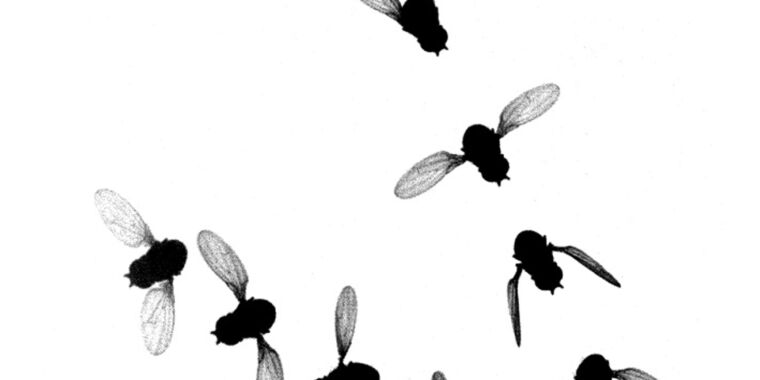



In the pursuit of understanding the intricate mechanics of insect flight, scientists have turned to high-speed imaging and artificial intelligence (AI) to study the biomechanics of insect wings. A recent study conducted by Michael Dickinson and his team at Caltech has shed light on the complex structures and movements of insect wings [682ceb2f].
Insect wings are unique in their composition and function. Unlike bird wings, which evolved from limbs, insect wings have their own specialized joint called the wing hinge. This hinge is made up of five interconnected plate-like structures known as sclerites. The rapid movement of these sclerites during flight has been challenging to capture using traditional imaging techniques.
To overcome this challenge, the researchers utilized high-speed cameras and a neural network to analyze the wing motion of fruit flies, a commonly studied insect model. By capturing the intricate movements of the sclerites, the team was able to gain insights into the role that individual sclerites play in shaping insect wing motion.
The findings of the study have provided valuable information about the biomechanics of insect wings and the evolutionarily important skeletal structures involved. Understanding the mechanics of the wing hinge is crucial for comprehending the unique flight capabilities of insects and how they differ from bird flight.
This research showcases the power of combining high-speed imaging and AI in unraveling the mysteries of nature. By leveraging these advanced technologies, scientists can delve deeper into the complexities of insect flight and gain a better understanding of the remarkable adaptations found in the natural world.
In addition to the study on insect wings, other researchers have explored various nature-inspired innovations. A team of scientists led by the Harvard John A. Paulson School of Engineering and Applied Sciences (SEAS) developed a superhydrophobic surface inspired by the water-repellent properties of spider hairs. This breakthrough has opened up possibilities for applications in biomedicine and other industries [1f509155]. Another team at the University of the Pacific in Hawaii is working on a fabric for lunar space suits that can repel lunar dust using electrostatic forces [44d86388]. Furthermore, researchers in South Korea have developed a gecko-inspired robotic handling technique using a dry adhesive, which has potential applications in robotics [d3cfed87]. These examples highlight the incredible ingenuity that arises from biomimicry and the potential for nature-inspired solutions to address complex challenges.
The integration of high-speed imaging, AI, and biomimicry continues to push the boundaries of scientific knowledge and technological advancements. By studying and emulating the remarkable adaptations found in nature, researchers are paving the way for innovative solutions in various fields, from engineering to medicine.